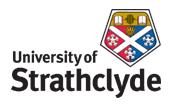The Real Wind
Farm Case Study
The problem
The wind farm is located in the
northern part of UK. It has 15 wind turbines, each rating 850kW.
Cut-in,
cut-out and rated speed of turbine is 4m/s, 25m/s and 16m/s
respectively. Its expected
energy out put in 2007 was below designed value. During the winter
“January,
February and March” 2007 several turbines’ output was
dramatically low. It is
also observed that it happened, when turbines were operating at high
wind
speed. The economical loss was approximately £100.000. This
energy and
economical loss reached a peak in March 2007.
The energy plot (Power-time plot)
below shows the turbine X performance, during 01/03/07 to 07/03/07. The
real performance
of the wind turbine is represented in blue and power expected is red.
The power
expected is related with turbine X. The losses are represented in
yellow colour.
Losses are the difference between the power output and the expected
power.

In this plot, it is possible to
see that the difference between expected and output power reaches a
maximum
value of 500 kW. The average energy loss is around 20% and 40% from the
rated
figure at high wind speed.
To understand these energy gaps,
it is necessary to follow the wind speed data sheet, look at the
different winds
speed and also the alarm codes. To understand unexpected performance,
it is
necessary to look into climate conditions, such as ice in the blades,
jamming
of anemometer, or any other problem during the winter time. Hence it is
important to understand the extreme temperatures and also high
temperatures
during this period.
The
following plot below shows the
power performance of the turbine X. The trend is based on the power
output and the wind speed. In
this graph is possible to see that power loss occurs when the
wind
speed above 10 m/s.

Complete
report on case study can be downloaded from here.
|



